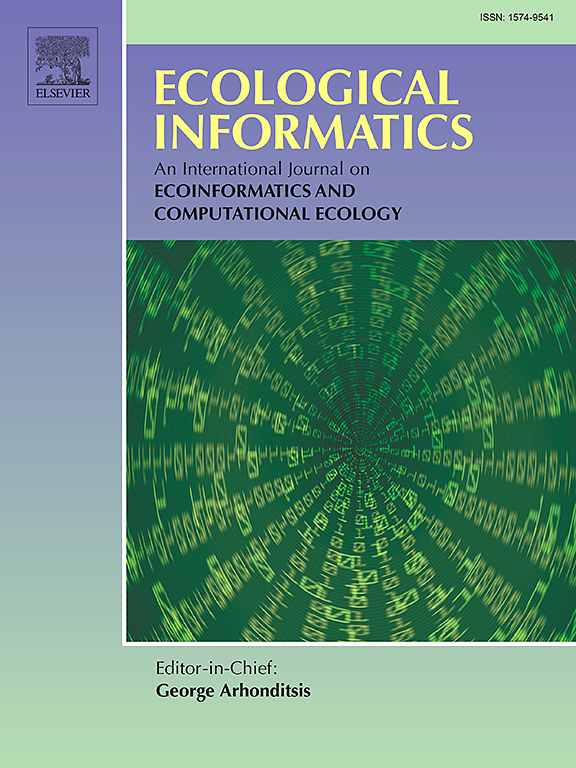利用时间序列遥感和 SHAP 增强型机器学习分析 2001-2020 年中国赣州稀土矿区植被动态
IF 5.8
2区 环境科学与生态学
Q1 ECOLOGY
引用次数: 0
摘要
稀土开采对现代工业和经济增长至关重要,但往往会导致严重的环境退化。以往的研究探讨了稀土开采对生态环境的影响,但尚未充分研究环境因素和人为因素之间错综复杂的相互作用和细分,如何在较长时期内驱动植被变化。本研究针对这一空白,采用时间序列遥感和 SHAP 增强型机器学习,分析了 2001 年至 2020 年中国赣州稀土矿区的植被动态。利用大地遥感卫星数据得出的kNDVI,我们确定了三种不同的植被轨迹类型:顺环境型、逆环境型和逆环境型。结合 SHAP 分析的集合机器学习模型显示,在所有采矿类型中,耕地面积比例、PM10 水平和灌木林面积比例是影响植被的最大因素。此外,2012 年之后,帕尔默干旱严重程度指数和向下的地表短波辐射成为植被健康的积极因素,而人口压力则对荒芜环境地区产生了更大的负面影响。我们的研究结果凸显了植被恢复模式的空间异质性,并强调了土地覆被变化、空气质量、气候因素和人类活动之间在影响植被动态方面复杂的相互作用。这项研究为稀土矿区制定有针对性、因地制宜的恢复策略提供了宝贵的见解,有助于提高采矿实践和全球环境管理的可持续性。本文章由计算机程序翻译,如有差异,请以英文原文为准。
Analysis of vegetation dynamics from 2001 to 2020 in China's Ganzhou rare earth mining area using time series remote sensing and SHAP-enhanced machine learning
Rare earth mining, essential for modern industries and economic growth, often leads to severe environmental degradation. Previous research has explored the ecological impacts of rare earth mining but has not fully investigated the intricate interplay and subdivisions of environmental and anthropogenic factors driving vegetation changes over extended periods. This study addresses this gap by employing time series remote sensing and SHAP-enhanced machine learning to analyze vegetation dynamics in China's Ganzhou rare earth mining area from 2001 to 2020. Using the kNDVI derived from Landsat data, we identified three distinct vegetation trajectory types: pro-environment, des-environment, and res-environment. An ensemble machine learning model combined with SHAP analysis revealed the cropland area proportion, PM10 levels, and shrubland area proportion as the most influential factors affecting vegetation across all mining types. Additionally, after 2012, the palmer drought severity index and downward surface shortwave radiation emerged as positive contributors to vegetation health, while population pressure had a more substantial negative influence in des-environment areas. Our findings highlight spatial heterogeneity in vegetation recovery patterns and highlight the complex interactions among land cover changes, air quality, climate factors, and human activities in shaping vegetation dynamics. This study provides valuable insights for developing targeted, context-specific restoration strategies in rare earth mining areas, contributing to more sustainable mining practices and global environmental management.
求助全文
通过发布文献求助,成功后即可免费获取论文全文。
去求助
来源期刊

Ecological Informatics
环境科学-生态学
CiteScore
8.30
自引率
11.80%
发文量
346
审稿时长
46 days
期刊介绍:
The journal Ecological Informatics is devoted to the publication of high quality, peer-reviewed articles on all aspects of computational ecology, data science and biogeography. The scope of the journal takes into account the data-intensive nature of ecology, the growing capacity of information technology to access, harness and leverage complex data as well as the critical need for informing sustainable management in view of global environmental and climate change.
The nature of the journal is interdisciplinary at the crossover between ecology and informatics. It focuses on novel concepts and techniques for image- and genome-based monitoring and interpretation, sensor- and multimedia-based data acquisition, internet-based data archiving and sharing, data assimilation, modelling and prediction of ecological data.
 求助内容:
求助内容: 应助结果提醒方式:
应助结果提醒方式:


